


















































N orth Dakota is full of energy and innovation. We’re always working on new technologies to power our future. Take North Dakota coal It’s a vital part of clean energy development Coal is always affordable, always reliable and always evolving. By investing in research and development, we’re discovering new ways to capture more carbon dioxide and leading the way to a cleaner and more vibrant tomorrow. Learn more at





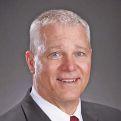

We’re kicking off 2017 with focuses on law and energy. Energy is a traditional January topic, but we’re tackling law for the first time. So we decided to put together a comprehensive list of the top business law tips from attorneys around the region. It’s free legal advice. The experts shared some important pointers that I think will come in handy for many of us. Find it on page 28.
As for energy, we dove into environmental responsibility and found out that some of the power providers in the region were controlling emissions before it was mandated. They’re adding renewables to their portfolios, too, and wondering what the future will hold with the Clean Power Plan. It’s finalized, but in litigation, and environmental policy is surrounded by further uncertainty as a new president with a history of denying climate change takes office. Read what utilities have to say about the CPP, their current emission controls, renewables and plans for the future, starting on page 24.
Be sure to check out Nonprofit, another new section we’re rolling out with our redesign. It’s on page 32 and features a mentorship program in Minot, North Dakota, that fosters lifelong friendships. It’s uplifting and reminds us it’s important to do good. Maybe it’ll prompt us all to revise our New Year’s resolutions and make more time for volunteering.
2016 was a stupendous year for Prairie Business, with our website and print redesigns, new special sections and rebranding. We’re ready to step into 2017 and keep pushing forward. Cheers.
PUBLISHER KORRIE WENZEL AD DIRECTOR STACI LORD EDITOR
LISA GIBSON STAFF WRITER KAYLA PRASEK
CIRCULATION MANAGER BETH BOHLMAN
LAYOUT DESIGN, AD DESIGN JASON MAGSTADT KRIS WOLFF
ACCOUNT MANAGERS NICHOLE ERTMAN 800.477.6572 ext. 1162 nertman@prairiebusinessmagazine.com

GARRETT RICHIE 248.202.8955 grichie@prairiebusinessmagazine.com
Prairie Business magazine is published monthly by the Grand Forks Herald and Forum Communications Company with offices at 375 2nd Avenue North, Grand Forks, ND 58203. Subscriptions are available free of charge. Back issue quantities are limited and subject to availability ($2/copy prepaid). The opinions of writers featured in Prairie Business are their own. Unsolicited manuscripts, photographs, artwork are encouraged but will not be returned without a self-addressed, stamped envelope.
SUBSCRIPTIONS
Subscriptions are free www.prairiebusinessmagazine.com
ADDRESS CORRECTIONS

Prairie Business magazine Box 6008 Grand Forks, ND 58206-6008
Beth Bohlman: bbohlman@prairiebusinessmagazine.com
ONLINE www.prairiebusinessmagazine.com

The University of North Dakota Center for Innovation Foundation’s technology incubator is home to 26 unmanned aerial systems-related companies, mostly entrepreneurs or international companies working to establish themselves in the emerging marketplace as national airspace opens up for UAS operations. This new industry cluster will diversify and grow the state’s economy.
The UAS technology incubator is larger than any other accelerator, incubator or entrepreneur center in the nation. There certainly will be more UAS entrepreneurs as the state becomes a growing national hotspot for UAS entrepreneur activity, especially in conjunction with the nation’s first drone business park, Grand Sky, the Federal Aviation Administration Test Site, and the critical talent provided by the UAS majors at UND.
The state’s first Small Business Administration Accelerator Growth grant was secured by the Center of Innovation Foundation to launch the Autonomous Alley initiative. The initiative helps UAS entrepreneurs access capital and venture development assistance, network with UAS industry experts and secure customers. Dan Daffinrud, chief financial officer for SkySkopes, leads the initiative.
SkySkopes is a UAS flight service startup located in the tech incubator. It was the first North Dakota startup approved by the FAA to fly unmanned aircraft for business purposes, and has grown to more than 16 certified pilots from the UAS program at UND. It flies its fleet of 24 aircraft for industrial inspection, security, precision agriculture, training certification and other uses. It has flown over 300 successful missions in 2016, more than any other company in North Dakota.
A year ago, Tero Heinonen, founder and CEO of Sharper Shape, decided to make Grand Forks his North American headquarters after looking at several locations. Heinonen is a serial entrepreneurial and experienced startup executive with a successful track record from co-founding five technology companies in Finland.
Sharper Shape is a global leader in drone-based automated inspection and maintenance planning services for the energy industry. Its Sharper A6 is the world’s most advanced drone for beyond-visual-line-of-sight (BVLOS) asset inspections. Using its Sharperscope 5.0 multi-sensor system and proprietary automated analysis software, the company provides asset inspection services that drastically reduce maintenance costs for high-value assets such as power lines, pipelines and railways.
Sharper Shape teamed up with the Edison Electric Institute to conduct several demonstrations of commercial inspection services based on long-distance
Bruce Gjovig CEO AND ENTREPRENEUR COACH UNIVERSITY OF NORTH DAKOTA CENTER FOR INNOVATION FOUNDATION GRAND FORKS 701.777.3132 BRUCE@INNOVATORS.NET
drone flights. With one of the first BVLOS waiver requests, Sharper Shape and SkySkopes are working with Xcel Energy, Montana-Dakota Utilities, Minnkota Power Cooperative, Houston Engineering, Northern Plains Railroad, UND and the Edison Electric Institute to conduct test flights.
Another international UAS firm chose to locate at the tech incubator last summer. Founded in 2008, Robot Aviation manufactures fixed-wing unmanned aircraft and unmanned helicopters primarily for the civilian markets. The product most likely to spur collaboration with other UAS and sensor companies is an autopilot computer program, which can be adapted to numerous aircraft systems. The founders of Robot Aviation have been at the forefront of commercial drone technology in Norway with nearly 20 years of experience in developing and operating advanced UAS for defense, government and the private sectors.
Bjorn Forsdal, president of Robot Aviation USA, cited the expertise of other UAS-focused companies, abundance of UAS pilots, the UAS test site and open airspace as attributes that make the state an attractive place to set up a North American headquarters. Robot Aviation is partnering with SkySkopes to collect thermal and infrared data in a series of test flights around the country.
Tommy Kenville, founder of Unmanned Applications Institute International, operates the longest operating UAS startup in the state, which was launched in 2010 as the first institute for research, testing and consulting in the UAS industry. The North Dakota Airspace Integration Team was Kenville’s idea. The group acts as the interface between the state and the FAA on UAS integration into the National Aerospace System. Kenville developed the list of industry experts to participate on the team and created the “one voice” concept, which led to North Dakota having the nation’s first designated FAA UAS test site. He remains optimistic for significant growth in the UAS industry in North Dakota led by UAS entrepreneurs. PB

Legal contracts have become a large part of running a business. Nearly every business owner is faced with the daunting task of understanding the various contracts he or she agrees to. They’re such a dominant factor in our economy that the Nobel Prize in Economics was awarded to Oliver Hart and Bengt Holmstrom for their analysis of them.
Knowledge of how contracts work and understanding what you signed is essential to operating a business. Jim Rohn, a popular motivational instructor, discusses this issue in a lecture series. He talks about how he signed a loan guarantee for a business, and the loan was paid, but after the business continued to borrow from the bank, he was required to ensure payment again. He had not investigated or fully understood the contract language when he signed it.
I was once on the board of a local business whose board members and owners were asked to sign loan guarantees with a bank. The business had started to lose ground and the bank was concerned. At that time, one of our board members said he didn’t think the bank would call upon the loan guarantees, despite the fact that they were signed, indicating he didn’t intend to make good on his guarantee. Fortunately, after less than a year, the business changed, the loan was repaid and the guarantee was not enforced.
In a recent business purchase transaction, the seller, upon reading the agreement, asked me, “You are not really going to hold me to that are you?” This, in most cases, would be an indication of trouble, but I trusted the seller and wanted the transaction to occur. Upon reflection, making the changes required to accommodate unknown expectations was just not in the best interests of either organization, we were not in the condition to deal with the uncertainties involved and, as a result, I asked the seller to cancel the sale, which we did. Sometimes challenges such as these lead to bad results.
A binding contract is said to exist when two willing and able parties mutually agree to act or conduct themselves in a certain way. As economic conditions change, and as a business chooses to change its direction, one party to a contract might seek to abolish the agreement
Matthew D. Mohr CEO, DACOTAH PAPER CO. FARGO MMOHR@DACOTAHPAPER.COM
or even refuse to honor what was agreed upon. Courtrooms are filled with litigation prompted by broken agreements. Failing to abide by an agreement entered into in good faith is considered by many a lack of integrity.
Contracts help establish requirements and expectations. If an organization chooses to consistently disregard what has been agreed upon, eventually it will face negative consequences and damage its reputation.





Where are you storing your data? In our increasingly connected world, the answer to this question can be critical to business success. We are producing immense amounts of data, which continue to grow quickly, particularly in the areas of health care, finance and education. And while we are all busy generating massive amounts of data, cyber criminals are constantly on the prowl, developing new ways to steal and exploit it.
So unless you are one of the rare businesses that have managed to find a way to successfully exist entirely offline, there is no question you are generating data. But where are you storing it, and is it safe?
In the past, some companies opted to keep data storage in-house. This worked for a while, but as demands for space and security measures have grown, it is no longer feasible for many businesses to justify the expense of building bunkers and the necessary redundant network connections. Instead, more companies are using data centers, where they can easily expand space as needed and know that optimal security measures and connections are in place to keep their data safe.
Dakota Carrier Network has constructed two data centers in North Dakota — the first in Fargo in 2006 and the second in Bismarck in 2012. Demand for our data center space has steadily increased in the past few years and we expect this trend to continue for the foreseeable future. In fact, DCN is celebrating the addition of 30,000 square feet of space to its existing data center in Bismarck, a direct result of increased customer demand. The new space will provide storage for customers from throughout the U.S., along with advanced security features such as private suites, which allow customers the highest level of exclusivity.
The growing demand for data storage also reflects the advancements North Dakota has made in its quest to embrace the technology boom and its role in boosting rural economies. The Dakota Fiber Initiative has focused on providing high-speed internet access to every household and business in the state. As of 2016, that goal has been largely realized. DCN and its owner companies alone have installed 40,000 miles of fiber optic cable throughout North Dakota in the past 15 years, reaching every community in the state. That fiber optic network provides businesses a connection to hubs in Chicago, Denver, Seattle and Minneapolis, and from there to markets anywhere in the world, allowing even the most remotely
located businesses in North Dakota to remain competitive in the global economy. The expansive fiber network has also allowed DCN and its member companies to develop the nation’s first statewide WiFi network, which will provide customers with a secure mobile connection at access points.
There is no question that technology is now vital to our everyday life, including the way we do business. We are proud to be based in a state that values technological innovation and supports efforts to expand access to technology to everyone who lives and does business here. PB
Seth Arndorfer CEO DAKOTA CARRIER NETWORK FARGO 701.323.3000 SARNDORFER@DAKOTACARRIER.COM






is dean and Floyd B. Sperry professor of law at the University of North Dakota School of Law and co-director of the Institute for the Study of Tribal Gaming Law and Policy, both in Grand Forks. Before starting her career in education, Rand served as assistant U.S. attorney in the Eastern District of Wisconsin. She taught at the University of Wisconsin-Milwaukee before joining UND in 2000.

My dad, Tom Rand, was the pre-law adviser at UND when I was an undergraduate. I was an anthropology major, and I think he wanted to make sure I’d be employable. More seriously, I was drawn to the idea that law impacts every single person, every single day. The more we improve our laws and legal system, the more we improve people’s lives. A.
HOW DID YOU CHOOSE THE AREAS YOU SPECIALIZE IN?
After law school, I worked on a case that involved a Wisconsin tribe and how the tribe’s gaming operation impacted tribal members. I started thinking about how the law could maximize the positive impacts — economic development, tribal government funding, job creation — while minimizing the negative impacts — problem gambling, over-reliance on gaming as an economic driver, crime — that are associated with legalized gaming generally. From there, I began writing with my frequent co-author, Steve Light, on Indian gaming law and policy issues.
Both in college and in law school, I had professors who inspired me. I hoped to “pay it forward” by becoming a teacher. And my dream was to teach at UND School of Law, as the university has given my family and me so much through education — in fact, my grandfather was a UND Law graduate.
WHAT CHALLENGES FACE THE LEGAL INDUSTRY AND WHAT ROLE CAN THE LAW SCHOOL PLAY IN MEETING THOSE CHALLENGES?
In our state and region, we need more lawyers to serve our rural communities. In North Dakota last year, three counties had no attorneys, six counties had only one attorney, and seven counties had only two attorneys. In these 16 counties, there are 20 attorneys to serve more than 54,000 people living across 19,000 square miles (over a quarter of the state’s land area). This shortage of rural attorneys creates a justice gap — meaning that people do not have access to affordable legal services.

Living up to the leadership that North Dakota’s law school deserves. As the state’s only law school, we have a unique obligation to serve our bench and bar, communities, and people. We also have truly outstanding students, faculty, staff and alumni who give heart and soul to our law school. For our state and for our people, it’s job No. 1 to be the best law school we can be.
Along with our State Bar Association and state courts, we created the Rural Justice Program, which provides financial support to law students who work in rural North Dakota. Students who spend a summer working in a rural community can build professional and personal networks, experience the quality of life, and begin to put down roots, all of which make it more likely that the student will choose a rural employment opportunity after graduation. As more solo and small firm practitioners reach retirement age, and as more attorneys gravitate toward larger cities, it is important to connect law students to rural communities. With support from the Edson and Margaret Larson Foundation, we’ve been able to expand the Rural Justice Program. Next steps include the possibility of a loanforgiveness program modeled after South Dakota’s Rural Attorney Recruitment Program.

Xcel Energy’s 200-megawatt Courtenay Wind Farm north of Jamestown, North Dakota, is fully operational and producing enough energy to power 100,000 homes, the power provider says. The farm includes 100 wind turbines on 25,000 acres, in cooperation with 60 landowners.
Geronimo Energy initiated development of the Courtenay Wind Farm in 2008. In 2013, Xcel Energy entered into a long-term power purchase agreement with Geronimo Energy, and became the owner of the project in 2015. Wanzek Construction of Fargo began work on the wind farm in 2015. Courtenay Wind Farm went online the first week of December.
“Investing in wind energy builds on our industry-leading carbon reductions and it also delivers what our customers and communities are seeking — cleaner, more renewable energy at an affordable price,” says Matthew Lindstrom, media relations representative for Xcel Energy. “We believe our wind portfolio can save significant dollars in energy costs for our customers over the next 20 years. We are adding 1,500 megawatts of wind energy in the Upper Midwest so we can take 100 percent of the federal production tax credits available now and pass the savings on to customers.”
In October, Xcel Energy proposed building four more wind farms in the Upper Midwest. Border Winds Farm in North Dakota’s Rolette County was added to Xcel Energy’s wind energy fleet at the end of 2015, producing 150 megawatts.
The $300 million Courtenay Wind Farm was self-funded, Lindstrom says. The project is expected to generate $850,000 annually in local tax revenues and a total of $26.5 million for the landowners in the next 20 years.
Minot State University in Minot, North Dakota, Lake Region State College in Devils Lake, North Dakota, and the North Dakota School for the Deaf/Resource Center for Deaf and Hard of Hearing in Devils Lake are collaborating on 2 + 2. The program will allow students to complete an Associate of Applied Science degree inAmerican Sign Language and Interpreting Studies with LRSC, then transfer to Minot State University to complete the Bachelor of Applied Science Degree in Interpreting and Sign Language Skills.
A grant from the Bush Foundation and a match from the Higher Ed Challenge Fund will assist in development of the program. Students can take the entire program from either campus or remotely through interactive, live video. North Dakota School for the Deaf/Resource Center for Deaf and Hard of Hearing will support MSU and LRSC through consultation and practical opportunities.
“There is a national shortage of qualified ASL interpreters,” says Holly Pedersen, MSU Department of Special Education chair, in a statement. “Our program allows greater flexibility for students to continue their education in the field of interpreting because they can access high-quality instruction from rural or remote areas.”

Minnesota State Community and Technical College will start offering two certificate programs in January that were created to meet business and industry demands in the region served by the college.
The Supervisory Leadership Essentials program will help prepare individuals for leadership roles within their companies. The second program, Industrial Workplace Certificate — Telecommunications Emphasis, will help fill the need for trained entry-level technicians in the telecommunications industry.
Both are one-year, 18-credit programs available on the college’s campuses in Detroit Lakes, Fergus Falls, Moorhead and Wadena. Classes will be taught in M State’s telepresence classrooms, which use video conferencing technology to create an in-person teaching experience.

“The creation of these two programs is an example of how M State is becoming more flexible in how we respond to meet the needs in our region,” says Carrie Brimhall, vice president of academics.
The Supervisory Leadership Essentials program is designed for currently employed team leaders, managers and supervisors and those seeking employment in or promotions to leadership roles. The focus is on providing a knowledge base of the practices and principles of leadership, supervision and management.
With the workforce shortage in the area, employers are increasingly aware of the need to invest in their employees and prepare them for leadership roles, Brimhall says. “Employees are often promoted to a supervisory position because they are really good in their current role, yet they struggle with the transition from peer to leader in the organization,” she says. “This program will provide the knowledge and practical skills for effective leadership.”
The Industrial Workplace Certificate program with an emphasis in telecommunications will teach the basics of working within the telecommunications industry and installation of fiber optic networks. Students will also gain experience through an internship program. The program is intended to prepare students to be residential and commercial cable and fiber optic installers and technicians.
“Several local companies have expressed the need for entrylevel technicians within the industry,” says Steve Erickson, technical program dean. “This is designed to meet the needs of companies through a short, relevant certificate for workers.”
Erickson says he anticipates demand for telecommunications technicians will grow as the result of the 2016 Minnesota Legislature’s approval of a $35 million investment in Minnesota’s Border-to-Border Broadband grant program, which is intended to build infrastructure in rural areas. PB
FARGO — Jobs have increased by 50 percent at North Dakota State University’s Research & Technology Park since 2010. As of December 2015, there were 1,105 jobs at companies located in the park and 234 jobs at RTP Technology Incubator graduate companies located around the Fargo-Moorhead area.

The RTP has served as a catalyst for high-tech economic development in Fargo since 2000. “The park’s goals mirror those of the state of North Dakota,” RTP executive director Chuck Hoge says in a statement. “Our shared mission is to diversify the economy through high-tech STEM (science, technology, engineering and mathematics) jobs, develop the workforce and provide valuable career opportunities for North Dakota students in state.”
Developing the workforce and valuable STEM jobs for North Dakota students is a top priority for the park, Hoge says. As such, 60 percent of RTP and Incubator graduate internships are held by NDSU students; 37 percent of RTP and Incubator graduate jobs are held by NDSU alumni; 15 percent of the jobs are held by graduates of other North Dakota University System schools; and more than 50 percent of RTP and Incubator graduate jobs are held by NDUS alumni.
“The research park has worked to create an environment that is conducive to growth and expansion,” Callie Klinkmueller, communications and program coordinator, tells Prairie Business. “The growth has occurred in Tech Incubator graduate companies that now employ people across the FM area, within our park, tenants who continue to expand and add new jobs, and in our current tech incubator, tenants who have grown enough to require additional support and development staff. Our mission is to help companies evolve through our partnership with state programs like InnovateND and our provided resources, educational opportunities and mentorship.”
The RTP is home to 19 companies, 15 of which are located inside the Incubator building. RTP tenants include John Deere, Bobcat and Appareo, while startups including Omnibyte, c2renew and OpGo Marketing are located in the Tech Incubator.
“The RTP provides an opportunity for companies of all sizes to connect to students, faculty and research, which has proven to be a significant draw to the area,” Klinkmueller says. “Established companies like Bobcat and John Deere enjoy access to top talent graduating from NDSU and startups benefit from our park-funded student internship program, which allows startups to get the help they need without the extra cost.”
Klinkmueller says bridging the gap between NDSU and the entrepreneurial community has always been a priority for the RTP. “We are proud to contribute to the economic and technological diversity and success of the FM area.” The RTP also administrates about 50 InnovateND clients who are in the process of starting companies in the Fargo-Moorhead area and diversifying the economy.
“What’s unique about the Fargo entrepreneurial community is the collaboration,” Klinkmueller says. “Each entrepreneurial organization brings something to the table, and the fact that the RTP gets to be a collaborator, supporter and contributor to this community is a very exciting part of what we do.”
Klinkmueller says the RTP also is dedicated to seeking out, encouraging and providing startup resources for the students and faculty of NDSU “who are developing the technology of tomorrow. Fargo is blessed with some of the brightest minds in technology, so it is our goal to connect these innovators with the resources necessary to start a company in the FM area.” PB



























Uncertainty surrounds new federal emissions rules, but some energy companies in the region were setting their own goals for controls and renewables before the current mandates and guidelines were in place
BY LISA GIBSONBasin Electric Power Cooperative has invested about $1.6 billion in environmental controls for its power plants, with an additional $181 million per year spent on maintenance and operation of those controls. They reduce emissions of sulfur oxides, nitrogen oxides and regional haze from coal-fired power plants, as well as some natural gas plants. And some controls were put in place before regulations and guidelines were set for certain types of emissions, putting Basin “ahead of the curve,” says Steve Tomac, senior legislative representative for the cooperative.
Similarly, Montana-Dakota Utilities Co. controls sulfur dioxide, nitrogen oxides, haze, mercury and particulate matter at its power stations, reducing some pollutants by up to 90 percent, in excess of requirements and guidelines.

“Even though we’re required to put something in place for
some controls, our plants have been controlling a number of these pollutants and emissions already,” says Abbie Krebsbach, environmental director for MDU.
MDU also is a participant in the Environmental Protection Agency’s voluntary Natural Gas STAR (Science To Achieve Results) Methane Challenge Program, which seeks to significantly reduce methane leaks from natural gas pipelines in the next five years. MDU’s plan includes reducing excavation damages and working closely with contractors and the North Dakota One Call system to make sure pipelines are marked.
Basin and MDU are among power providers overachieving when it comes to environmental sustainability. While emissions control is a large piece of the puzzle for the power industry, it’s complemented by the use of renewable resources.
In 2005, Basin’s members set forth a resolution to produce 10 percent of its energy from renewable resources by 2010. “It speaks to how forward-thinking our membership is,” says Mary Miller, vice president of communications and creative services for Basin. “That was far ahead of the curve. It was just our membership saying, ‘We want to move ahead with this. We think it makes sense.’
“We’ve far surpassed that,” Miller says, adding the co-op’s portfolio includes nearly 1,600 megawatts of renewable energy, mostly wind, accounting for just more than 23 percent of its capacity. Basin also produces about 44 megawatts using recovered heat from TransCanada’s Northern Border natural gas pipeline, which produces a tremendous amount of heat when pumping the natural gas through the system. “They’re about as green as you can get,” Tomac says of the heat recovery systems. “As long as the gas is flowing through the pipeline, these little units give us some local recovered energy that’s fed into the distribution system directly.”
MDU generates about 5 megawatts of energy from Northern Border Pipeline waste heat, Krebsbach says, in addition to about 160 megawatts, or 20 percent of the utility’s electricity, from wind.
“Wind is the key renewable resource here,” Krebsbach says. The typical capacity of wind turbines in North Dakota is about 40 percent, Tomac says. It doesn’t blow every day, he adds, pointing out that the coldest and hottest days of the year typically aren’t windy.
In just the past few years, wind/natural gas combination generation has become much more feasible and natural gas prices have come down while availability has gone up, Tomac says. “It’s a whole different environment than it was even two or three years ago for the development of a less-carbon world.”

Perhaps the most well-known, and most controversial, recent development is the EPA’s Clean Power Plan. The rule has been finalized but is in litigation. The first panel of judges is expected to weigh in this month or next.
The plan, as written, would implement carbon pollutant reductions for the power industry in stages through 2030, ultimately reaching 32 percent reduction from 2005 levels. Nitrogen oxides will see a 72 percent reduction and sulfur dioxide pollutants will decrease by 90 percent, according to the EPA.

Basin and MDU are participating in the litigation against the CPP. Tomac says compliance with the rules as written would cost Basin $5 billion. “Since 1961, we have invested and spent just shy of $6 billion on our generating assets. What that means is, in the next 15 years, we would need to almost invest as much as we did in the last 55.”
Tomac and Krebsbach agree that compliance will mean reducing coalfired power plant operations. “You’re either going to be paying for some
sort of emission credits … to continue to operate them, or, if those aren’t available, you’ll have to have curtailment of facilities,” Krebsbach says. Tomac likens it to a “double mortgage” — utilities will be forced not to use coal plants for their full intended lives, but will have to continue paying for them while investing in new technologies. Some of Basin’s coal assets have expected operational lives through 2060.
The EPA says on its website that the CPP is a “historic and important step in reducing carbon pollution from power plants that takes real action on climate change. Shaped by years of unprecedented outreach and public engagement, the final Clean Power Plan is fair, flexible and designed to strengthen the fast-growing trend toward cleaner and lower-polluting American energy.” The goals are strong, but achievable, it adds, putting the U.S. in a leading position to fight climate change. Another EPA rule in litigation would require new fossil-fuel power plants to capture and store carbon dioxide.
“I know every one of us is affected differently by the Clean Power Plan,”
Krebsbach says. “It just depends on your generation mix, the age of your plants, if you’re in the midst of being challenged with the decision of putting more controls on or not. A lot of different things factor in to it.”
Tomac says that while Basin wants to be as green and environmentally sustainable as possible, it’s important to be realistic about how long it will take to make the change. “I think most utilities, Basin included, believe that we’re going to have to operate in a more carbon-constrained world. Time and flexibility are really what we’re looking for as we try to move forward. We need enough time to make the adjustments, and we need enough flexibility to continue to use the useful life of facilities we have in place as we move forward.”

Whether a business is small or large and selling goods or providing services, at some point every business is likely to run into a legal question. While many large corporations retain a business attorney or might even have general counsel on staff, many small to medium businesses don’t.
Prairie Business asked business legal experts to disclose their top tips that companies of all sizes need to know. Here are the eight pointers they shared, in no particular order:
By Kayla Prasek“Established businesses often make the mistake of failing to retain a business attorney until they really need one,” says Brian W. Boppre, attorney and founder of Boppre Law Firm in Minot, North Dakota. “It is useful to have an attorney on retainer who understands and is familiar with the business so they can easily and quickly advise on important matters.”
Not only can a business attorney provide advice and assistance in times of crises, but an attorney can help a business owner navigate all legal questions affecting all areas of business.

Those thinking about starting a business should consider setting up a separate business entity to protect themselves, Boppre says. “Many businesses fail to set up a separate business entity, such as an LLC (limited liability corporation), when establishing a business,” he says. “With an LLC, the owner is protected as an individual against creditors and lawsuits against the business. This could help prevent both business and personal funds from being wiped out in the event of trouble.”
“Seek legal assistance before signing a contract,” says Stephanie Asheim, attorney at Vogel Law Firm in Fargo. Asheim says that while some executives will hesitate to incur the upfront cost of paying a lawyer to review a contract, the benefits outweigh that cost. “The costs when something goes wrong or litigation results often far exceed the cost of having a lawyer review and explain the contract and to negotiate more favorable terms to the business,” Asheim says. Key terms to be cautious of in contracts include those relating to payment, termination, indemnification, remedies and, in the case of a small business, any required personal guarantee, she says.
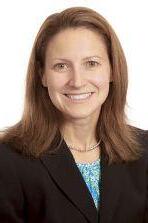

“Even the most successful business can be undermined by poor legal arrangements,” says Scott Swier, founder and president of Swier Law Firm in Sioux Falls, South Dakota. “Failing to plan for the possibility of lawsuits or other problems may come back to bite you at the worst possible time.”

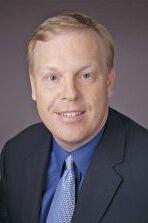
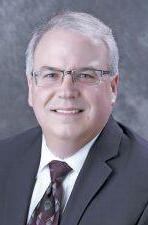


Swier says avoiding loose language in contracts and loose understandings can help protect a business. “Doing business with friends, family and long-time business partners is a common practice for business owners,” Swier says. “However, the strength of these relationships should not prevent you from signing detailed yet flexible legal agreements.” At the end of the day, business owners need to have the proper protections in place for themselves and their businesses.
A business attorney isn’t just there to answer legal questions and assist with business contracts. He or she can also provide advice for business owners trying to exit a business. “Many businesspeople seek counsel on choosing the proper entity structure for conducting business — for example, setting up a limited liability company, corporation or partnership,” says Darrell Larson, attorney at Camrud, Maddock, Olson & Larson in Grand Forks. “An often overlooked initial consideration is the mechanism by which the principals will sever their relationship and the business will continue. A buy-sell agreement provides that mechanism will sever.”
Larson says a business’s owners should address these issues before their relationship has soured and one or more want to exit ownership of the business. “Agree on how to get out when you get in,” Larson says.
Businesses of all sizes must be aware of cybersecurity threats as well as ways to minimize those risks and allocate the responsibility in the event of an incident or breach, Asheim says. “A business needs security safeguards, policies and procedures for employees and third parties able to access the computer systems, and a monitoring system,” she says. Insurance can also play a part in minimizing out-of-pocket costs relating to a breach. A general commercial liability policy will often not cover a cybersecurity incident and related losses. Written contracts with third parties can also allocate responsibilities relating to cybersecurity and any related losses, Asheim says.
A business attorney also can help a business owner nearing retirement prepare for the next step. “Business succession planning is often overlooked but is essential to facilitate a smooth transition of business ownership in conformity with the owner’s wishes utilizing all estate, gift and income tax savings methods legally available,” says Tim Dittus, attorney at Camrud, Maddock, Olson & Larson.
A business succession plan should include the business owner’s estate planning — especially in family-owned businesses — buysell agreements and a myriad of other items and issues to which competent, experienced professionals are essential, says Russ Melland, attorney at Camrud, Maddock, Olson & Larson. “Plan early to make the transition the best for all,” he says.
“The costs of litigation, which drains management attention, time and energy, is far higher than many businesses can afford,” Swier says. Swier says business owners should consider including arbitration clauses in their contracts, as well as considering other alternatives before actually going to court.
“Whether you ask your attorney for help with organizational paperwork, tax matters, intellectual property, or a customer who slips and falls on your premises, having an experienced expert in your corner nips problems in the bud and helps you avoid missteps that may later prove costly,” Swier says. PB



 BY LISA GIBSON
BY LISA GIBSON
zanata Ayuero and Carol Holman are best friends. They shop together, get pedicures together and their families spend holidays together. Their ages, 11 and 55, respectively, are an insignificant detail in their friendship. Holman and Ayuero were paired up as mentor and mentee five years ago through Companions for Children in Minot, North Dakota. The program pairs children ages 6 to 18 with volunteer mentors who serve as role models, spending a minimum of four hours per month together. But Holman says being a mentor means so much more than that. “It’s not just a few hours a month,” she says. “It’s a lifetime commitment, as far as I’m concerned.”
Heather Cymbaluk, executive director of Companions for Children, says many mentors and mentees have lasting relationships beyond the program. “Once they’re matched at a young age, if they have a really solid match, whether they stay in our program or unenroll later, most of them remain friends — lifetime friends.”
Mentors through Companions for Children must be at least 18 years old and are subject to a screening process and interviews before they are paired with children. Mentors are encouraged to take their mentees on free and low-cost outings, as any cost comes out of their own pockets. “We don’t want it to become a financial burden on the mentors,” Cymbaluk says.
Children can be enrolled in the program for a variety of reasons. Sometimes parents spend a large amount of time at work, or a child lives with grandparents or other relatives, has no siblings, or even many siblings. “We have some families that are big families so their kids benefit from having that one-on-one





time that they might not otherwise get,” Cymbaluk says. Sometimes, a child wants to explore new interests, so being paired with an adult mentor is a great way to start trying new things.
“We are here to provide an additional mentor to a child for whatever reason they might need one,” she says. “It doesn’t necessarily mean that a parent isn’t involved. … They just feel their child could use another mentor.” In fact, parents play a large role in Companions for Children. They sometimes are the ones who enroll children, but beyond that, they are interviewed before their child is paired with a mentor and serve as the contact for the mentor, once one has been chosen. Children also are referred for the program through other agencies, teachers, guidance counselors or sometimes another mentor, Cymbaluk says.
As a nonprofit, funding can be a challenge, but Companions for Children gets foundation grants, local grants, individual and business donations and benefits from fundraisers. “For any nonprofit, you don’t really know what next year brings,” she says. “We’re always growing, and as we get bigger, there are more costs that come with supporting a growing nonprofit.”
Companions for Children has been a part of the community since 1972. “We’ve provided hundreds of kids with mentors throughout our time in the Minot area.”

Before Holman moved to Minot about five years ago, she served as a mentor in Montana for a similar program. Once she was settled in Minot, she wasted no time finding Companions for Children and signing up to volunteer. “I think, to have the opportunity to share my life experiences and my time with a little girl who may not have the attention that she should be getting, or have available because of not having enough people in her life to share with her, it makes me grow as a person,” Holman says.

She raised two boys and says Ayuero is the daughter she never had. “Having Zanata in my life has made me feel whole. It makes me feel complete as a person and as a woman to be able to spend time with such a beautiful young lady and have her teach me so much about life. It’s definitely a blessing.”
Holman’s grandson was 10 months old when Ayuero entered their lives and he thinks of her as a big sister. “She’s part of us,” Holman says, adding that their entire families are close, often spending Christmases and Thanksgivings together.
“It’s not only a positive thing for the children,” Cymbaluk says. “It’s very rewarding for the mentors, and it provides a very unique, free opportunity for our families.”
Holman would agree. “A lot of people think you mentor because the child needs somebody. Really, it’s good for both of you and I think, a lot of times, we as the adult companion get a lot more out of it than the kids do.” She says volunteering as a mentor is an excellent opportunity to give back to the community and help provide guidance and structure for local children.
As for her bond with Ayuero, Holman has no doubt it will last a lifetime. “We’re best friends. Without each other, I don’t know what we’d do. There would be a void.” PB
Lisa Gibson EDITOR, PRAIRIE BUSINESS 701.787.6753
PICK UP THE FLU
(surfaces spread germs, just like people)


Clorox® disinfecting products kill 99.9% of germs - to help offices stay healthy.



We all know sneezing, coughing colleagues pass along germs. But so do the objects they touch. Don’t worry. Clorox® disinfectants wipe away illness-causing germs. So keep them on hand - and help keep your office health and happy. And productive. Available at:
Use
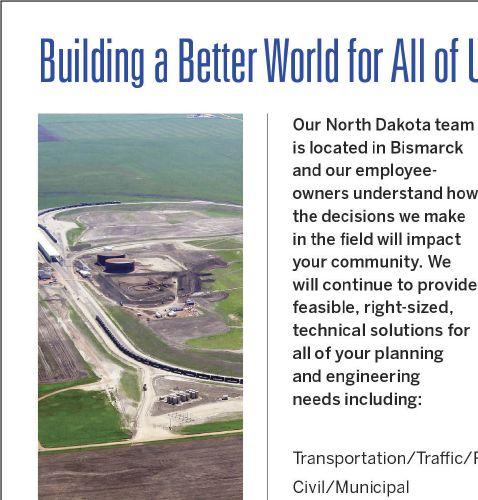















2017 will be an exciting year as we complete the Fargo project and begin work to upgrade our other plants throughout the network. Our recently completed digitization project will clear the way for gigabit capacity for both residential and business customers. Headend and field operations upgrades have begun in several of our key communities, and that should all complete in 2017. We expect to close on our recent acquisition of the cable telecom system in Lawrence, Kansas, and plan to expand our data center operations.
While the list is ambitious, thanks to our extraordinary team, we will accomplish it without taking our eyes off our primary goal. We remain committed to creating a Midco brand and culture that embodies high performance and commitment to our customers.
Brent Wavra COMMISSIONING SOLUTIONS FARGO
COMMISSIONING SOLUTIONS FARGO
At Commissioning Solutions (CxS), we have three main goals for the 2017 calendar year. We have a new service we launched in 2016 that will undergo rebranding so that we can market it across the nation. In addition to that, we put a heavy focus in 2016 on getting our new building commissioning and retro-commissioning processes down pat so that we could grow CxS staff in our satellite offices in 2017.

Looking forward to 2017, Lake Area Tech will continue to push innovative and effective ways to recruit, retain, graduate and place our students in the region’s high-demand and high-paying technically skilled workforce. Being ranked as one of the top community colleges in the nation for seven consecutive years has solidified our efforts to be the best two-year college available, and as a result, aim to achieve our 14th consecutive year of record growth. Our end goal is to have a record number of graduates whose wages surpass the high marks set by previous classes as they pursue their careers.

We will look to build on our “people first” approach in our interactions with our customers, employees and communities. We strive to live our core values while we are at work and in the community.

Two of our core values are bettering the places we live and embracing change. This requires employees who are flexible, innovative and understand that it is not our products first, but our people first approach that is making a difference in their communities throughout North Dakota.
So look for us to continue to create, build, volunteer and be even more charitable in 2017 and beyond.









